For the uninitiated, the name William Wadsworth Hodkinson may not ring a bell, but to a Hollywood history enthusiast, he is renowned for revolutionizing the movie industry. W.W. Hodkinson introduced the Hodkinson Distribution System, which completely transformed the way motion pictures were released prior to 1915, ultimately shaping the Hollywood we recognize today. Additionally, he founded Paramount Pictures and created the iconic logo featuring a snowy mountain with stars soaring around it—a familiar sight that greets us at the beginning of countless movies.
Apart from his contributions to the movie industry, W.W. Hodkinson was also actively involved in the aviation business. Collaborating with aircraft designer Don Berlin, they developed a highly versatile design for a small trimotor aircraft, which was named the Hodkinson HT-1 trimotor. Subsequently, W.W. established the Hodkinson Aircraft Manufacturing Corporation with the ambitious goal of producing numerous HT-1 airplanes. Unfortunately, despite his efforts, he struggled to generate sufficient interest from potential buyers, leading to only one plane being manufactured before the end of 1929.
As fate would have it, Central America became a promising region for air transportation companies, attracting numerous entrepreneurs and fortune-seekers from the United States. Almost everyone seemed eager to venture south and claim their share of the burgeoning opportunities. In this rush, a group of enthusiastic individuals was busy approaching presidential palaces and official residences in various countries in their quest to secure contracts for operating passenger and cargo air routes with whatever airworthy aircraft they could find. Guatemala, like other Central American nations, was not immune to this wave of aviation interest.
By 1930, even the Cuerpo de Aviación Militar (Military Aviation Corps) -CAM- under the leadership of Colonel Miguel García Granados, had established an air service using three Ryan B-1 Brougham aircraft. This air service proved crucial for transporting mail and passengers to remote and isolated areas across the country. However, a tragic accident involving one of the airplanes, coupled with Colonel García Granados’ departure and the arrival of the French Air Mission, led the CAM to abandon the commercial aviation endeavor. Instead, the air arm shifted its focus to combat training and achieving operational readiness with their newly acquired Morane Saulnier MS.147EP fighters and Potez XXVA-2 bombers. This shift in priorities was prompted by the necessity to suppress any potential revolutionary uprisings, such as the one that occurred in the Mazatenango department in 1929. During that rebellion, the Brougham aircraft conducted multiple close air support missions, often with a soldier firing a machine gun from their passenger door.
Shortly after the demise of the CAM’s air service, Victor D. Gordon and Sydney Neighors, two relatively unknown individuals, secured a government contract to take over its air routes. However, their endeavors to acquire suitable aircraft for the task proved to be a series of failures. They made numerous attempts to obtain Fokker Universals, Ford Trimotors, and even embarked on an unforgettable saga of trying to fly a Zenith Albatross -the largest plane available at the time- non-stop to Guatemala. Despite enlisting the services of pilot Jimmie Angel for this venture, the Zenith Albatross proved to be excessively complex and plagued with problems, leading to its abandonment in the United States. Eventually, they returned to Guatemala, only to face the quick revocation of their contract and expulsion from the country by President Lázaro Chacón. Later on, they resurfaced in Nicaragua, attempting to establish a railroad company there.
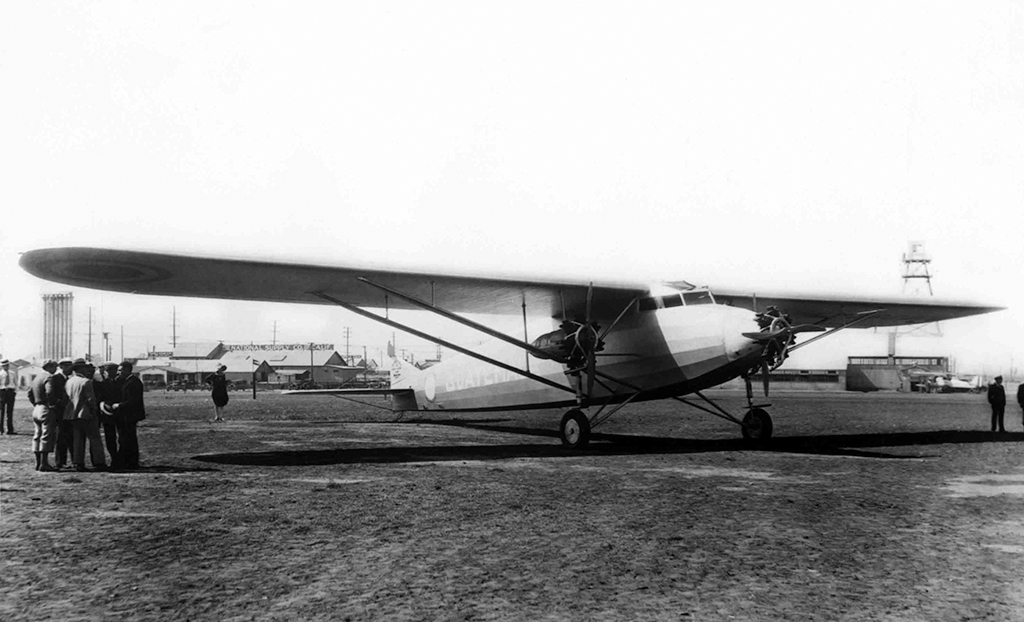
In April 1930, W.W. Hodkinson decided to take another shot at the aviation industry. Recognizing the promising potential in Central America, he, along with his associates John C. Blick and E.J. Leabow, established the Central American Aviation Corporation Limited (CAA) in Los Angeles, California. Their primary objective was to create subsidiary airlines in each of the Central American countries, primarily to operate internal routes and provide passenger and cargo transportation services. Just a few days later, one of Hodkinson’s pilots, named Daniel E. Ellis, embarked on a mission to Guatemala. His task was to lay the groundwork for the first of the envisioned small airlines that Hodkinson had planned for the region.
The timing couldn’t be more adequate, since the Guatemalan government was eager to revitalize the country’s aviation sector following the two previous failures in that realm. Upon his arrival, Ellis wasted no time and commenced negotiations with officials from the Ministerio de Fomento (similar to a Ministry of Economy). Soon after, he set up offices in the well-known Rex Hotel in downtown Guatemala and enlisted the services of a local entrepreneur named Alfonso Alejos, who would also act as the legal representative for the fledgling airline.
As Ellis worked on preparing a formal proposal for the Guatemalan government, he began exploring the country’s airfields to plan the air routes. For this purpose, a Fleet Model 2 biplane (C/N 83, U.S. Reg. NC9435) was sent from the U.S. However, the venture encountered early difficulties as just a few days after its arrival, on August 17, the airplane crashed near the town of Palín in the Escuintla department, while attempting to return to the city after inspecting some airfields on the Pacific Coast. Thankfully, Mr. Ellis emerged from the accident unharmed while the Fleet was replaced by a rather rare Mutual Service Blackbird biplane (C/N 100, U.S. Reg. NC87M) with which the daring pilot continued surveying the country’s airfields.
The negotiations between Ellis and the Guatemalan government continued throughout the remainder of 1930. However, things became more complicated after General Jorge Ubico emerged victorious in the presidential elections of February 1931. With this change in administration, any previous agreements made by Ellis with the Chacon’s administration were automatically rendered invalid. As a result, Ellis had to start anew and engage in fresh negotiations with the new government.
Despite the challenges, by May, a final agreement was eventually reached and received approval from the Guatemala congress through decree No. 1746, which authorized Ellis and Alejos to establish an air service for transporting mail and passengers along internal routes. The government would partially subsidize the operation, providing two thousand dollars per month to support the venture. With the formal approval in place, Ellis’ vision for a Central American airline was now becoming a reality.
By November 1931, the airline faced a critical financial crisis for the first time, however. It seemed that the administration of General Ubico had lost interest in supporting it and had abruptly stopped providing the subsidy. This sudden reduction in financial aid placed the airline in an exceedingly challenging position, making it difficult to start operations. Shortly after, W.W. Hodkinson began receiving alarming letters from Ellis, detailing the critical state of the airline.
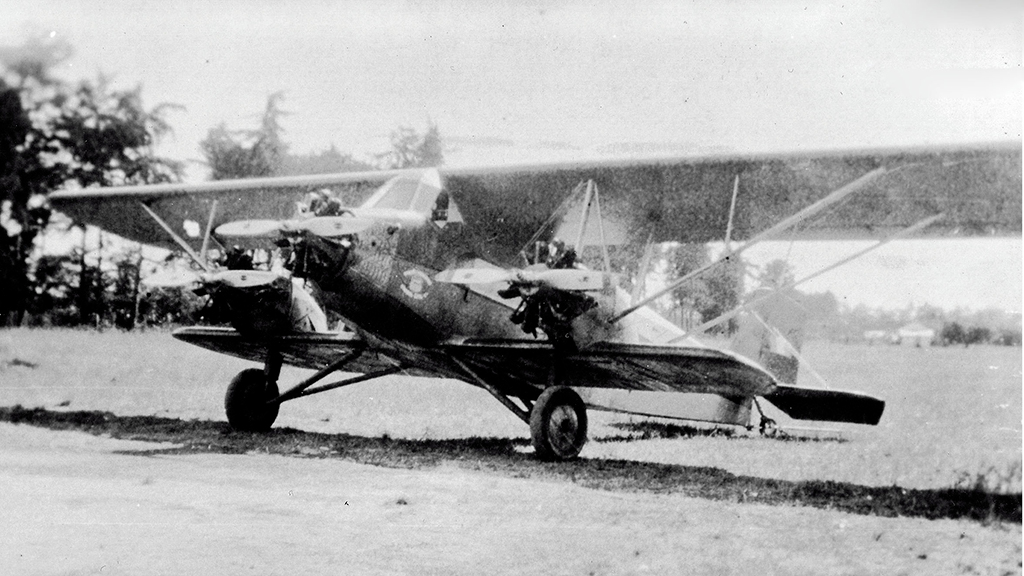
Recognizing the urgency of the situation and determined to salvage the venture, he made the decision to personally intervene. Hence, in February 1932, W.W. Hodkinson arrived in Guatemala on a Boeing 40B aircraft (C/N 879, U.S. Reg. NC268), which was promptly put into service, as she began flying regular routes from Guatemala City to various destinations, including Quetzaltenango, Cobán, Salamá, Rabinal, Tactic, and eventually reaching the remote and isolated town of Santa Elena in El Petén department. The Boeing 40-B was followed by an Ogden Osprey PC trimotor (C/N 105, U.S. Reg. NC150W) that arrived in the country in March. His next move was to terminate the employment of Ellis and Alejos while bringing onboard Carlos Schauffler, another local entrepreneur, to assume the management position. Additionally, the airline’s office was relocated to a more suitable and cost-effective building situated at 6ª Avenida Sur No. 22, Guatemala City. The final step taken by Hodkinson was to fire the local pilots, most of whom were military aviators, and replaced them with North American pilots. This decision was aimed to reduce the airline’s dependency on the government and establish a more self-sufficient operation.
By the second half of 1932, W.W. Hodkinson had successfully stabilized the airline, putting it on a path of recovery and growth. Eager to expand operations, he set his sights on opening a new route from Santa Elena to Puerto Barrios, which was the only port Guatemala had in the Caribbean. This route was intended to transport small loads of chicle, a crucial ingredient for the Wrigley Company’s chewing gum production. To support this ambitious plan, Hodkinson brought additional flying equipment to the country. This included a recently overhauled Kreutzer Air Coach K-3 (C/N 104, U.S. Reg. NC9354) and a Kreutzer Air Coach K-5 (C/N 113, U.S. Reg. NC187W), which arrived in October. These airplanes were followed by W.W.’s very own Hodkinson HT-1 trimotor (C/N 1, U.S. Reg. NC82M) that arrived in Guatemala in November. Lastly, in January 1933, the company acquired a second Fleet Model 2 biplane (C/N 298, U.S. Reg. NC732V) that was used for liaison duties and eventually, for surveying airfields.
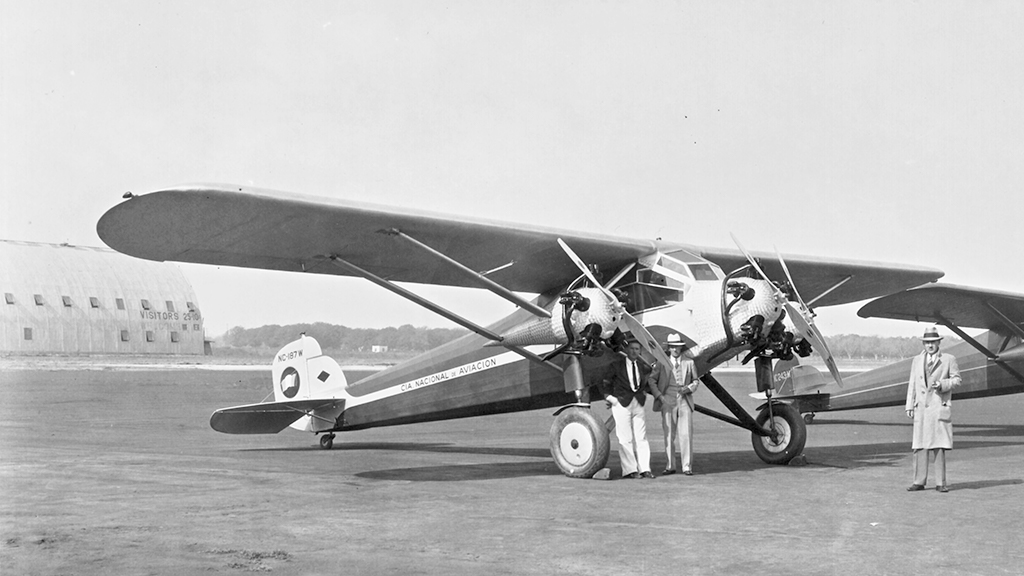
In April 1933, the Guatemalan government agreed to amend the decree that had initially authorized the creation of the air service. The modifications extended the authorization for an additional ten years, reaffirmed the government’s commitment to subsidizing the airline, and removed Ellis and Alejos as its legal representatives. Instead, Carlos Schauffler was added to the contract, with the role of the local representative for both W.W. Hodkinson and the Central American Aviation Corporation Limited.
With these changes in place, the airline’s official name, “Compañía Nacional de Aviación” (National Aviation Company) -CNA- was formally recognized. Interestingly, the airplanes had already been bearing the CNA lettering and logo since 1931, but now it was officially sanctioned by the government. This recognition came through the enactment of decree No. 1915 on April 27, 1933.
After Ubico’s administration reconfirmed the contract, the airline experienced a fresh new beginning, introducing additional routes and launching a charter service to various destinations within the country. Several sources mention that during the remainder of the year, no less than two additional Kreutzer Air Coach K-5 trimotors were brought to the country in order to strengthen the fleet. However, no photographic evidence of these two has surfaced to this date.
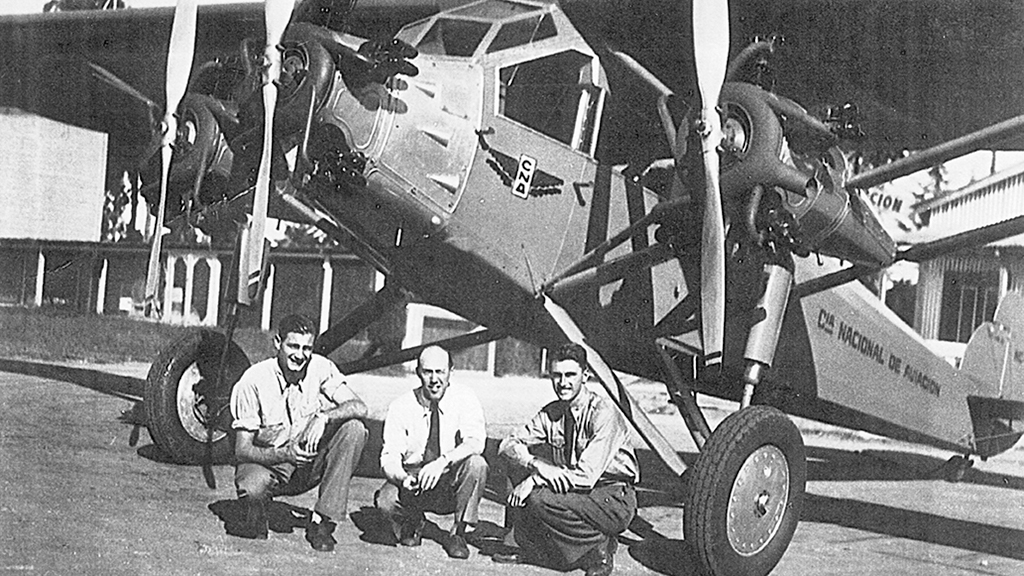
In June, Pan American Airways -PAA- known for its extensive international air routes to and from Central America, applied for and successfully obtained permission to operate a new route from Santa Elena to Puerto Barrios. The primary purpose of this route was to transport passengers and large shipments of chicle, using their robust Ford trimotors, which appeared massive compared to the smaller airplanes that W.W. had previously committed to for the same route. Moreover, PAA significantly increased the flight frequency to three times a week, which put W.W. and the CNA in a challenging position concerning their chicle-carrying business, which was the main source of income for the airline at that time.
To make things even worse for the CNA, in December the prominent carrier, Transportes Aéreos Centro Americanos -TACA- (Central American Air Transports), inaugurated its route from San Salvador to Guatemala City. TACA also expressed a keen interest in establishing local routes, directly competing with PAA, and posing an additional challenge to Mr. Hodkinson’s small airline.
Fearing a disaster, W.W. took the brave decision of expanding his airline’s operations. He ventured into new territories, establishing routes to the remote departments of Huehuetenango, Sololá, and Mazatenango, all situated in the highlands. Additionally, W.W. sought to strengthen his fleet, acquiring a twin-engine EMSCO B-5 (C/N 1, U.S. Reg. NC849E), which arrived in January of 1934. This new aircraft had the capacity to carry five to six passengers, enhancing considerably the airline’s capabilities.
Despite facing serious challenges, the CNA managed to achieve notable transportation figures between 1933 and 1934. During this period, the airline successfully carried 4,320 passengers, in addition to transporting 43,924 kilograms of cargo and 7,091 kilograms of mail. This led to an improvement in profits, with W.W. Hodkinson reporting earnings of $500 per month. However, despite this progress, the airline remained heavily reliant on government support to continue its operations.
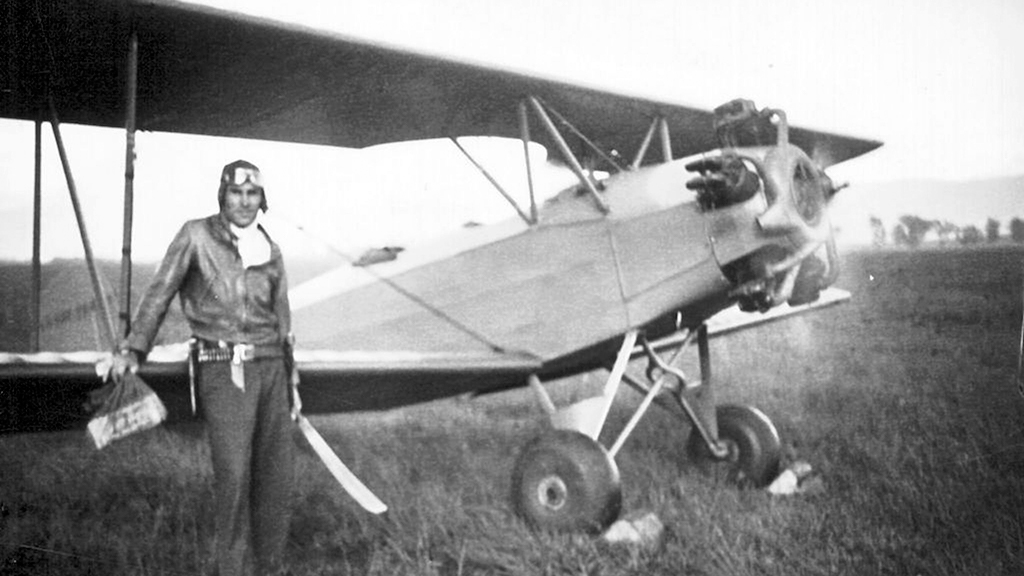
Regrettably, the situation worsened when it became apparent that Ubico’s administration, for a second time, was quietly signaling a gradual reduction in the subsidy granted to CNA. Simultaneously, PAA’s operations expanded along the Atlantic Coast of Central America and extended towards Mexico, incorporating Puerto Barrios and Santa Elena into its regular routes. This further aggravated W.W.’s airline’s plight, leaving him somewhat desperate as he sought assistance from the U.S. Legation. However, his efforts only garnered sympathy and consolation without any tangible help or support.
Running out of options, W.W. embarked on a new round of negotiations with the Ubico administration. He was even given the promise of an audience with the president, although it remains uncertain whether this meeting actually took place. Regardless, throughout the rest of 1934, CNA fought fiercely to survive in an intensely competitive environment, shaped by the presence of both PAA and TACA in the Guatemalan airline market.
The challenging circumstances were more than evident, and to demonstrate the airline’s determination to stay afloat, by December, W.W. initiated negotiations to acquire a rare Boeing 80-A (C/N 1092, U.S. Reg. NC234M) to further bolster his fleet. Unfortunately, despite the efforts and the addition of the new aircraft, it proved to be too little too late. The Boeing 80-A was finally delivered in March 1935, but by then, the competitive landscape had already taken its toll, and the difference it could make was minimal.
By the end of March, a significant event occurred when Roy Keeley, an inspector from the United States’ Civil Aeronautics Board -CAB- (predecessor to today’s Federal Aviation Administration – FAA), arrived in Guatemala City with the task of conducting inspections and verify the airworthiness of all CNA’s aircraft, which were still operating under U.S. registrations and thus subject to U.S. laws. However, Mr. Schauffler, the head of CNA, refused to allow Mr. Keeley to inspect the airplanes, even when the latter returned to the airline’s hangar accompanied by General José Víctor Mejia, the chief of the Guatemalan Military Aviation Corps and the official responsible for the government’s civil aviation affairs.
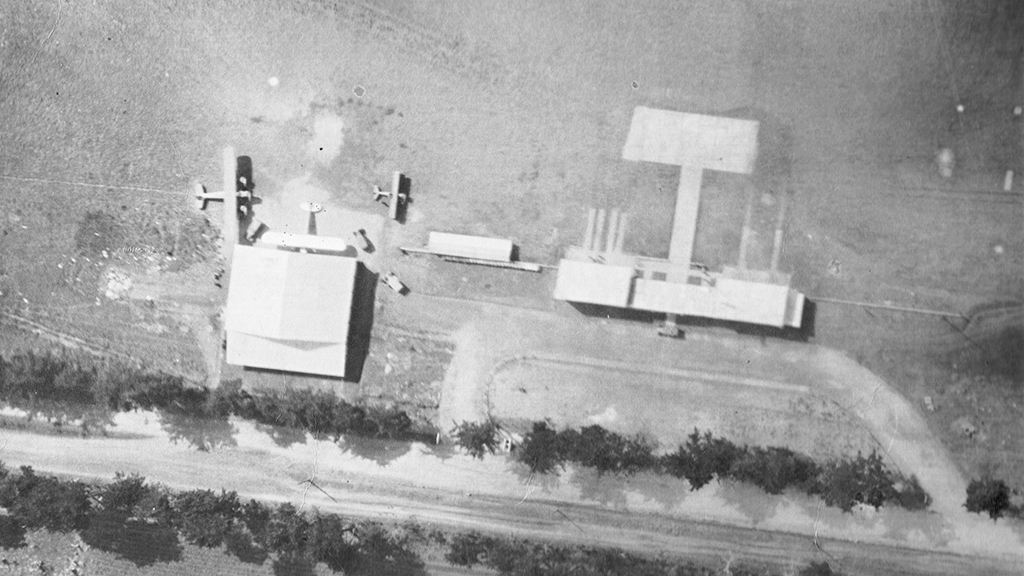
As a consequence of the lack of cooperation and the inability to conduct proper inspections, Roy Keeley decided to take action. He cancelled the U.S. registrations for all of CNA’s airplanes before returning to the U.S. Consequently, the aircraft were left in a legal gray area, as they were no longer registered under U.S. laws and, at the same time, were not registered in Guatemala, mainly because the country had not yet established a civil registration system for aircraft.
After the departure of the CAB inspector, extensive negotiations ensued between the government and Mr. Schauffler to legalize the situation of the airplanes in Guatemala. These discussions eventually led to the establishment of a crude civil registration system for aircraft. The chosen prefix for this system was “ABD”, followed by a two-digit number. As a result, all of the airline’s airplanes were assigned registration marks with that system. However, it proved to be short-lived, as it was later replaced in 1937 with the prefix “LG” that served as the precursor to the current “TG” prefix used for Guatemalan aircraft registration.
Feeling that it might be time to explore new opportunities, W.W. made the decision to seek authorization for CNA’s first international route, intending to connect Guatemala City to San Salvador. His plan included opening an office in the Salvadoran capitol to explore the potential of establishing an airline in that country. The Guatemalan congress authorized this new route by enacting the decree No. 2082 on April 29, 1935. Encouraged by this development, W.W. traveled back to the U.S. to acquire suitable aircraft for this international venture.
However, tragedy struck shortly after this positive development. Less than a week later, on May 7, the EMSCO B-5 crashed at the Izabal department while en route to Puerto Barrios. The aircraft was carrying mail and cargo at the time of the accident, and tragically, the pilot lost his life in the crash. This incident marked the beginning of a downward spiral for the airline, adding further challenges to their already precarious situation.
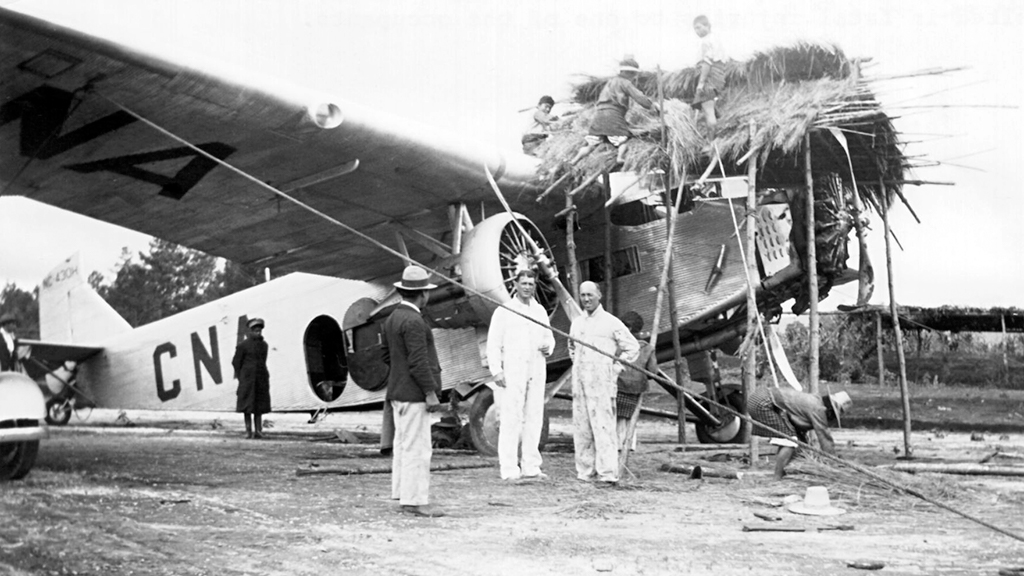
On July 29, the Ford 5-AT-C (C/N 5-AT-90, U.S. Reg. NC430H), which W.W. had acquired for the San Salvador route, arrived in Guatemala City and was incorporated into the regular flights within the country. Meanwhile, plans were underway to finalize the logistics for the new international route to San Salvador. However, before the Ford could embark on this journey, an unfortunate incident occurred on September 8, when during a regular flight from Sololá, a town located in the highlands of Guatemala, the trimotor sustained severe damage during takeoff. The following day, tragedy struck again when one of the Kreutzer airplanes, the one formerly registered as NC9354 and by then carrying the Guatemalan registration ABD-21, crashed in the mountains near Sololá while carrying spare parts to repair the damaged Ford, killing the pilot.
These back-to-back accidents dealt a severe blow to CNA’s operations, hampering indefinitely the inauguration of the San Salvador route and, ultimately, sealed the fate of the airline that was left in a rather precarious situation from which it never recovered.
Less than a month later, TACA’s subsidiary in Guatemala, with the government’s approval, assumed control of CNA. In this acquisition, everything from CNA’s routes to its fleet of airplanes became the property of the Honduran airline. During the transition period, Carlos Schauffler was retained as the manager of the Guatemalan operation. His tenure was short-lived, though, as he was ultimately dismissed from his position by mid-1936.
The end of CNA as an independent airline and its integration into the TACA network led to significant changes in the aviation landscape in Guatemala, it also contributed to the consolidation of TACA’s position as a major player in the Central American airline market, enabling it to compete on equal footing with Pan American Airways’ regional operations. That, however, is a story for another day…
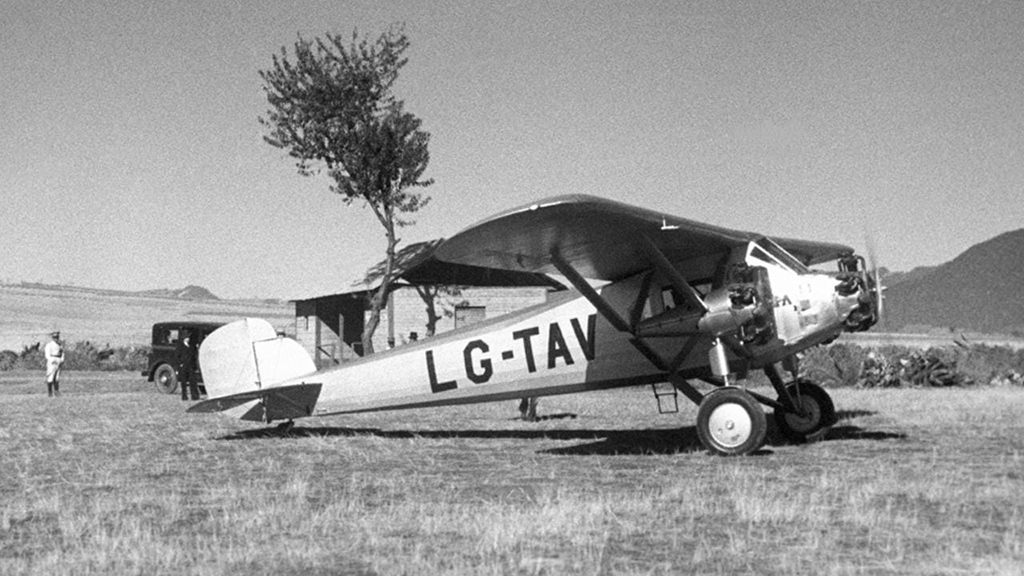
CNA Aircraft Partial List
| Type | C/N | U.S. Reg. | Date of Delivery | Comments |
| Fleet Model 2 | 83 | NC9435 | May 1930 | The first airplane operated by CNA in Guatemala. Crashed near Palín, Escuintla on 17AUG1930. |
| Mutual Aircraft Service Blackbird | 100 | NC87M | ||
| Boeing 40-B | 879 | NC268 | February 1932 | |
| Ogden Osprey PC | 105 | NC150W | March 1932 | |
| Kreutzer Air Transport K-3 | 104 | NC9354 | October 1932 | Crashed near Sololá, on 30JUL1935. |
| Kreutzer Air Transport K-5 | 113 | NC187W | October 1932 | Sold to TACA as LG-AAB, then to LG-TAV and XH-TAV by 1937. |
| Hodkinson HT-1 | 1 | NC82M | November 1932 | Officially purchased by CNA on 10JAN1933. Retuned to the U.S. in November 1935 for reconditioning. Sold to U.S. operator. |
| Fleet Model 2 | 298 | NC732V | January 1933 | To TACA and then possibly to the Salvadoran Air Force. |
| Boeing 80-A | 1092 | NC234N | March 1935 | |
| Ford 5-AT-C | 5-AT-90 | NC430H | July 1935 | Sold to TACA as XH-???, then to TI-46, and AN-AAC. |
This investigation, originally published on July 15, 2006, wouldn’t have been possible without the invaluable help of Gary Kuhn, Dan Hagedorn, John Davis, Tulio Soto. Special thanks to John Underwood for making available his wonderful collection of CNA photos, some of which are included here.

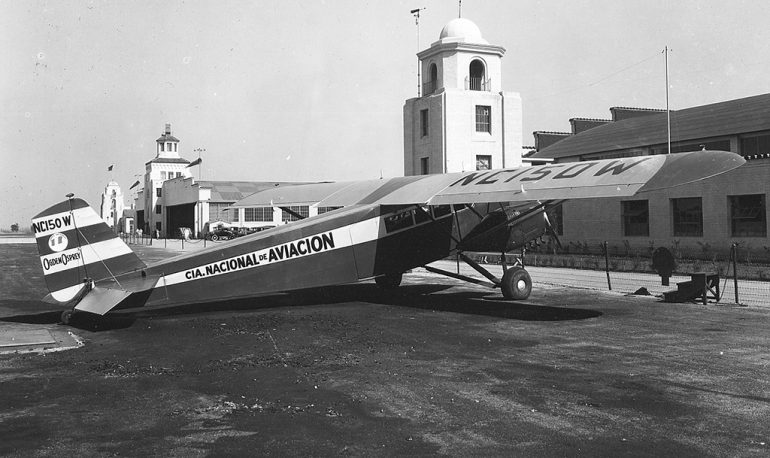
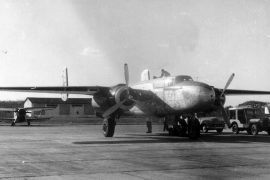

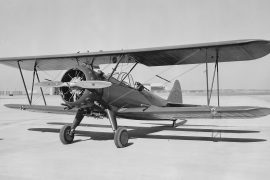

This is the first time I have heard of these entrepreneurs and their ventures in Guatemala. Congratulations Mario for the text and the investigation behind the history; fantastic photos, as well.